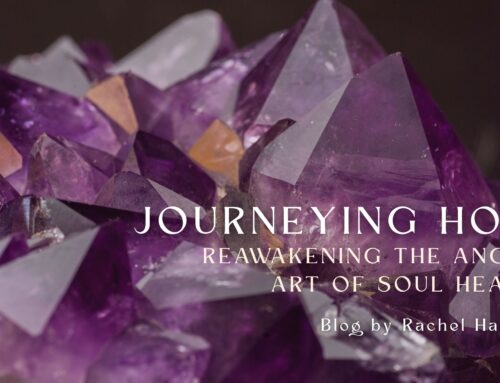As the hours of sunlight increase the air has started to become warmer and heavy with fragrant blooms. With these Springtime changes we tend to naturally feel more energised. Many of us embrace returning to exercise with this upsurge of energy but often this can bring on injury or burnout if we aren’t careful, especially if we have tended towards being more sedentary over the Winter months. There is an increased risk of injury and/or illness when reloading after a period of not exercising (unloading). Whether this reloading is an increase in intensity, volume or frequency, injury/illness can occur if these are accelerated more quickly than your body’s ability to adapt to the training stress (AIS 2024).
Below I have outlined some tips on how to safely get your body moving this Spring. With a little planning you can enhance your return to exercise and improve your overall performance.
Build on the intensity, volume and frequency slowly.
Intensity: Avoid jumping straight into high intensity workouts. Start at slower paces, use a lighter weight, imagine you’re building a foundation layer by layer.
Volume: Start with short reps/shorter walks or runs, then increase your volume over time. This will help condition your body and prepare you for your ultimate goal, whether is a 5k run or marathon you will need to build up to it over time.
Frequency: It’s easy to set big goals when we are feeling the new buzz of energy in Spring, but this can often lead to early burnout. Begin with one or two days and only add onto this once you have consistently achieved your initial goal, building your frequency slowly. This not only helps guarantee you’ll achieve your goals but it will be easier on your body to adapt to the increase in exercise so that you don’t injure yourself or burn out. Ultimately this will allow you to build a long lasting routine with your exercise.
Warming up properly will improve your speed, strength and agility but most importantly it will prevent injury.
Extremely helpful when returning to sport or adding running into your exercise routine. These movements will help strengthen your hip and quads which will hopefully keep hip and knee pain at bay. Include in your warm up:
- Forward lunges
- Side lunges
- Squats
- Jump-land-jump-land on one foot
- Sprint- accelerate-decelerate
- Dynamic stretching
You can also consider adding a yoga class into your weekly routine if you find it difficult to stretch regularly. Many yoga poses are also great for strengthening the hips and quads.
A yoga/pilates class or a gym session can also be very helpful for strengthening and stabilising joints especially if you are prone to getting niggles here and there when you increase your exercise/sporting activity.
Consider your diet
As you increase your intensity, volume and frequency of activity this will increase the nutritional demands on your body. The Australian Institute of Sport is a great resource for information on meeting your body’s energy requirements as well as signs and symptoms of under-fueling: low mood, irritability, persistent fatigue, more frequent injury and/or illness-just to name a few. They also have recipes, information on supplements and even an e-learning platform designed by sports dieticians to help optimise your health and performance through nutrition. The Australian Institute of Sport-Nutrition
Struggling with delayed onset muscle soreness (DOMS)?
Delayed onset muscle soreness (DOMS) occurs 8-48 hours after the cessation of prolonged exercise or vigorous stretching. This soreness can peak from 48-72 hours and recovery is usually complete in 7 to 10 days. Having DOMS can be seen as a positive sign post exercise as it indicates that the muscle is healing into a stronger state than it was prior to the activity and that your training has been effective (Physiopedia 2024). However, as uncomfortable as it is there are some interventions that have been proven effective in lessening the severity or aiding in the recovery from DOMS:
- Heat therapy: try adding magnesium/epsom salt to your bath or apply heat packs.
- Massage: can be self applied with balls or rollers. If you are running in an event check to see if they are providing post-event massage, it’s well worth taking advantage of this to aid in your recovery and reduce soreness.
- Nutrition: Vitamin D, omega-3 fatty acids, branched-chain amino acids (BCAAs), antioxidant supplements (refer to AIS nutrition link above)
- Active recovery with timely rest: low intensity exercise, stretching, foam rolling, flossing
- Compression garments
- Adequate sleep
- Staying hydrated
(Physiopedia 2024)
If you are interested in learning a bit more about DOMS watch this informative video.
Muscle Soreness and Recovery Tips – Relieve Muscles FAST!
Rest when you need to
Try to listen to your body before, during and after exercise. If you are feeling tired consider what your body might need, whether it be a change in your intensity or volume of activity or perhaps you are needing a decrease in frequency by having a complete rest day. Injuries happen when we are fatigued so it is ok to slow down or to not push through to the end of a run or a rep. One day off is better than weeks off due to injury/illness. Lastly, it is also important to get plenty of sleep when reloading as this will give your body adequate time to recover and reduce the severity of muscle soreness.
I hope this informations helps and instils some confidence as you go out there and embrace the warm weather and higher energy levels.
Happy Spring!!
Justine is an experienced and compassionate remedial massage therapist dedicated to improving her clients’ well-being through a blend of relaxing restorative massage and targeted therapeutic techniques.
Justine’s warm and calm demeanour creates a nurturing environment as she works with each individual to find a treatment that is appropriate for them. She uses knowledge of the body’s structures and assessment to target the soft tissues related to the presenting issue. Justine is passionate about treating these target areas with precision whilst ensuring that the client is also in a state of relaxation so as to better facilitate muscle release and healing.
References
Australian Institute of Sport 2024, ‘Nutrition’, viewed 19 Sep 2024, <https://www.ais.gov.au/nutrition>.
Australian Institute of Sport 2024, ‘Training load in relation to loading and unloading phases of training’, viewed 19 Sep 2024, <https://www.ais.gov.au/position_statements/content/training-load-in-relation-to-loading-and-unloading-phases-of-training>.
Physiopedia 2024, ‘Delayed Onset Muscle Soreness’, viewed Sep 19 2024, <https://www.physio-pedia.com/Delayed_Onset_Muscle_Soreness?utm_source=physiopedia&utm_medium=search&utm_campaign=ongoing_internal>.









Leave A Comment